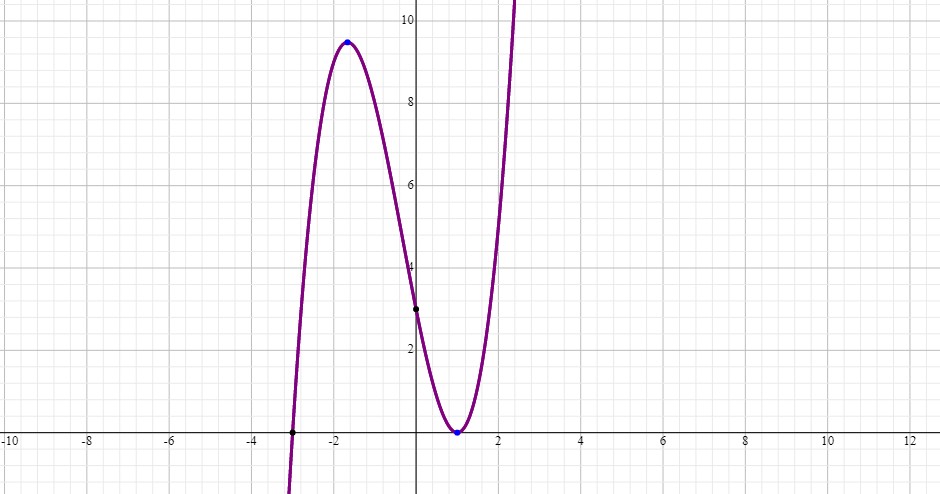If #f(x)=(x+3)(x-1)^2#, how do you find the local maxima and minima at #x# using the second derivative?
I'm lost. Once I find the derivative of #f(x)# , and then the second derivative using that, what exactly am I supposed to do? Set #f''(x)# equal to #0# , then plug those points into #f'(x)# ?
I'm lost. Once I find the derivative of
1 Answer
Explanation:
.
We need to take the first derivative of the function, set it equal to zero, and find its roots. Those roots are where the maxima and minima of the function are (both local and absolute).
Now, we need to perform the first derivative test to find out which one is the minimum and which one the maximum.
We know that the derivative evaluated at any point on the function gives us the slope of the tangent to the curve at that point. As such, is we try values of
Let,s try a value smaller than
This means that at
As such,
Let's now do the same with
At
This means
The second derivative is used to find the inflection point. But this problem has not asked for that.
The graph of the function is:


